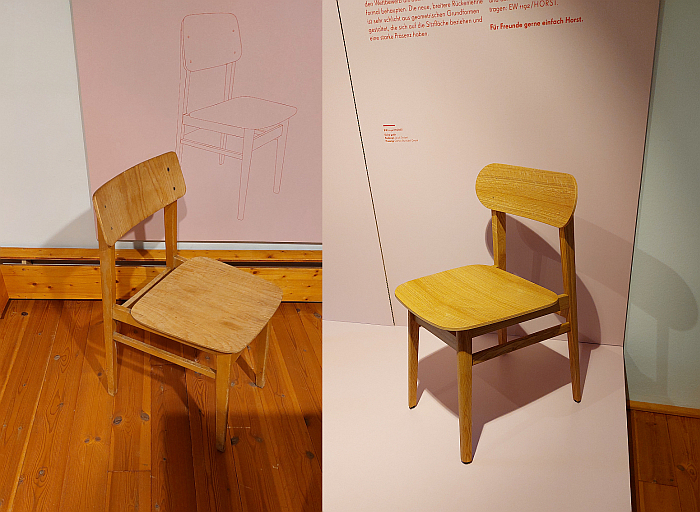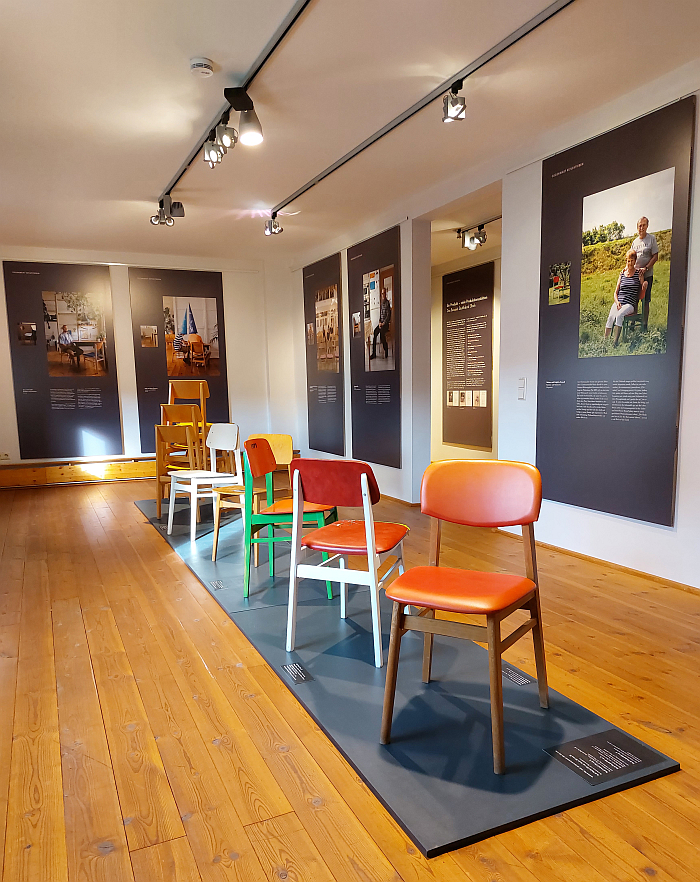Hallo Horst! Or, How, and why, the EW 1192 became Horst…….
As noted from the exhibition Der ungesehene Designklassiker at the Deutsches Stuhlbaumuseum, Rabenau, alongside the introduction, re-introduction, enabled to the EW 1192 by Horst Heyder, a work that was, in all probability, the most widely found, most widely used, chair in the DDR and, potentially, one of the chairs existent in the greatest population densities anywhere ever, and thus a chair that inarguably shouldn’t need to be re-introduced, but which on account of the nature of the development of Europe since 1989 sadly does, one also finds a contemporary 21st century re-design of the EW 1192 by Leipzig based designer Jacob Strobel.
A re-design that poses the question darf one re-design a work such as the EW 1192?, is one allowed to re-design a work such as the EW 1192?
¿Is one allowed to re-design a work that was one of the most widely found, most widely used, chairs in the (hi)story of a nation?
¿Is one allowed to re-design a work that so eloquently and succinctly allows access to more nuanced appreciations of the (hi)story of furniture design in the DDR?
¿Is one allowed to re-design a work that is one of the few surviving testaments to the work of Horst Heyder, an individual who played an important role in the development of furniture design in the DDR?
¿Is one allowed to re-design a work that is one of the few surviving testaments to the work of the Entwicklungsbüro Waldheim, an institution who played an important role in the development of furniture design in the DDR?
¿Is one allowed to re-design a work that is an artefact of daily life in the DDR, in a nation no longer existent?
¿Darfst du?
???
Standing in the Deutsches Stuhlbaumuseum looking at that contemporary re-design it occurred to us that there was one person particularly well placed to answer that question, one person who’d already considered it in a lot more detail than us. So we we asked them: ¿Is one allowed to re-design a work such as the EW 1192, Jacob Strobel?
¿Darfst du?
Der ungesehene Designklassiker at the Deutsches Stuhlbaumuseum, Rabenau
Imagine you were one of the best selling and most widely used chairs in your country. But (hi)story had forgotten you.
Imagine you were informative in context of elucidating important, but rarely illuminated, chapters in the (hi)story of furniture design. But (hi)story had forgotten you.
Imagine you were instructive in context of the practice and craft and industry of furniture design. But (hi)story had forgotten you.
Imagine you were in use in a great many locations. But no-one saw you. No-one knew your name. Just sat on you.
Imagine you were the EW 1192 by Horst Heyder.
With Der ungesehene Designklassiker the Deutsches Stuhlbaumuseum, Rabenau, not only enable one to imagine, but for all begin to redress the situation……

